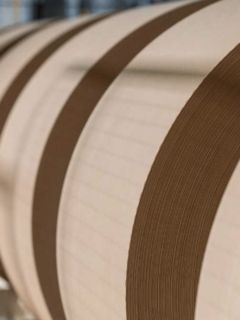 You probably see them in your daily reading, in the specialised media and on social networks: logistics success stories, where warehouses have significantly increased their performance by mechanising or automating their processes, abound on the web.You probably dream about it, given these reports of experiences that advocate machines and technology as the future of logistics. But many questions remain in the minds of many logistics managers: where to start these major changes in the warehouse? What solutions to evaluate, try out, choose? How to implement them in your particular strategy? This guide aims to give you a tangible plan of action based on business and human objectives, and to guide you in discovering the solutions for mechanisation and automation in logistics. Quite a programme, isn’t it?xml-ph
You probably see them in your daily reading, in the specialised media and on social networks: logistics success stories, where warehouses have significantly increased their performance by mechanising or automating their processes, abound on the web.You probably dream about it, given these reports of experiences that advocate machines and technology as the future of logistics. But many questions remain in the minds of many logistics managers: where to start these major changes in the warehouse? What solutions to evaluate, try out, choose? How to implement them in your particular strategy? This guide aims to give you a tangible plan of action based on business and human objectives, and to guide you in discovering the solutions for mechanisation and automation in logistics. Quite a programme, isn’t it?xml-ph
- Step 1: Set the objectives for mechanisation or automation of your warehouse
- Step 2: Evaluate the order picking phases that could be optimised
- Step 3: Prioritise the optimisations to be carried out
- Step 4: Find the right mechanisation or automation solutions
- Step 5: Deploy these solutions in the warehouse
step 1: Set the objectives for mechanisation or automation of your warehouse
First of all, you need to think of the mechanisation or automation of your order picking processes as a project in its own right. And when you think of a project, you need to set objectives in advance.So think about the specific objectives that could be yours. Do you want to
- Increase the order picking rate?
- Reduce the risk of RSI for your operators?
- Optimise your budget, by improving the rate per picker, or by stabilising the number of staff in your logistics team?
- Improve performance in view of the forthcoming development of your activity?
this step is absolutely crucial in order to know why you really want to mechanise or automate your order preparation. You can also ask yourself how quickly you want to achieve these goals and what ROI you expect from them in the end. These are all questions that are necessary before you even start auditing your current logistics practices.
Step 2: Evaluate the order preparation phases that could be optimised
Often, at the end of the first step, the goals that you have targeted will not require mechanisation or automation of your entire order preparation process. There is no question of investing in expensive technologies all at once! This is why, in order to achieve these goals in a structured way with an interesting ROI, you need to take a step-by-step, gradual approach: the first step is to find the
- In the storage phase, you can use pallet trucks to reduce TMS due to carrying heavy loads, or save time on time-consuming storage processes.
- In the picking phase, you can consider shortening picking routes that are too long, optimise the flow of your operators, or reduce the RSI linked to the trampling of your pickers.
- In the packing phase, it is possible to reduce the time spent on each parcel, which is particularly time-consuming because the process requires real precision, or to avoid RSI linked to the static standing postures of your teams.
- In the packing phase, you can perhaps limit the strain on your operators’ upper limbs, and thus reduce their risk of musculoskeletal disorders.
now that you have identified the logistics optimisations that you could carry out, phase by phase, you should enter them in a summary table and move on to the next step.
Step 3: Prioritise the optimisations to be carried out
When you were creating this table, you probably already thought about the fact that this or that optimisation would be more or less urgent, more or less interesting for your warehouse. This is the next step that you will have to go through: that of determining the optimisations that have a more or less immediate value. In short, your objective is to prioritise the optimisations to be carried out, according to the number of people involved in the optimisation
- The results you can achieve in terms of productivity;
- The budget to allocate;
- The estimated time required to implement these optimisations.
for each optimisation, you can give each of these criteria a score ranging from 0 (low productivity, high budget, long deployment time) to 5 (high productivity, low budget, short deployment time). Once you have entered these scores in the three columns of your table, add them up and determine which optimisations to carry out first: these will be the ones with the highest score. Thanks to this system, you now have a realistic and structured project in front of you , based on the ROI that you can achieve. Only after this stage can you ask yourself whether you need to mechanise or automate these various order preparation stations… Something that we are going to think about together from now on:
Stage 4: Finding the right mechanisation or automation solutions
- Facilitating handling: electric pallet trucks for the storage phase, or specialised electric forklifts for picking.
- Packing and securing small parcels, in particular with mechanical securing systems, some of which are foot-operated.
- Packing parcels in BtoB, with automatic wrapping machines, which will significantly reduce the tediousness of the packing phase for large orders.
- Closing parcels, thanks to mechanised case sealers or strapping machines.
“Mechanisation is the first step to investing in a more productive and efficient warehouse and having more loyal teams in the long term” Etane Derhy, Key Account Manager Europe at RAJA.
Which solutions to automate your warehouse?
As you have read previously,automating your logistics warehouse will usually require more thought and will break many of your current logistics warehouse processes. It is possible, with a very large initial investment, to automate your entire order picking process. However, you will often choose to focus on one of the two areas that benefit most from automation
- The storage and picking area
- The preparation and packing area
examinons donc les solutions à votre disposition pour l’automatisation de chacune de ces zones.
Automatiser son stockage et son picking : comment procéder ?
Pour cette première zone-clé, les solutions amenant le produit vers l’homme sont de plus en plus favorisées parmi les options avancées qui s’offrent aux responsables logistiques. Trois d’entre elles, matures et intéressantes, sont à examiner de près.
Le chariot filoguidé en allée étroite
Dans des allées de 1,5m de longueur seulement, un chariot se déplace aux emplacements prévus sur la commande. Le chariot est muni d’une nacelle qui vient se poser devant la case du produit à chercher pour la commande, ou du produit à stocker.
Grâce au chariot filoguidé en allée étroite, on réduit l’effort de picking. La phase d’acheminement du produit au préparateur pour la phase d’emballage n’est, elle, pas optimisée.
Les avantages de cette technologie
- Enormous space savings, as the entire picking area can be reorganised in 1.5m aisles.
- A strong reduction in the risk of errors when ordering.
- A gain in productivity because it is the trolley that will determine the best route for assembling the orders to be prepared.
points of attention with this technology
- The truck is not fast, with a top speed of about 7 km/h, the picking or storage speed is constant, but limited.
- As with any automated solution, it is necessary to ensure that a maintenance contract is in place, which includes a very quick response in case of problems.
- Moreover, working at height requires reinforced safety rules for the pickers.

The picking carousel
With the picking carousel, you set up a huge metal cabinet containing hundreds of slots on shelves. In the case of a vertical picking carousel, you simply scan the product and the cabinet brings the product down to the operator, who only has to associate it with his current order. This is a system that is particularly suitable for small products. The picking effort is thus reduced, even if the phase of routing the product to the picker is not optimised.Advantages of this technology
- A definite gain in productivity, as the operator waits for the products to be presented to him.
- A real reduction in the amount of work involved, compared to moving around in traditional picking aisles.
- A strong reduction in the risk of error when ordering.
the points of attention of this technology
- Make sure you have a maintenance contract that includes a quick and efficient intervention in case of problems.
automatic conveyor system
With this system, conveyors move totes, which pass through different areas, often corresponding to different product worlds. At each area, a picker feeds the tote (or box) with picked products. When the tote corresponding to an order is finalised, it is routed to the shipping area. The system is particularly suitable if the majority of your orders are multi-product. With this technology, the picking effort as well as the routing phase up to the shipping area are optimised.Advantages of this technology
- Increased productivity, thanks to pickers who now have a restricted area for picking products.
- Considerable time savings, as the bin (or box) makes most of the movements automatically.
- A strong reduction in the risk of errors when ordering.
the points of attention of this technology
- Once again, make sure you have a maintenance contract that ensures a rapid intervention if necessary.
Pour aller plus loin dans l’automatisation de vos phases de stockage et de picking…
Au-delà de ces trois technologies d’automatisation, il existe de nombreux systèmes de rayonnages automatiques, qui accueillent les palettes et boîtes de manière optimale. Reliés à un Warehouse Management System (WMS) spécifique, ils permettent d’automatiser la mise en rayon, et garder un oeil sur l’état de son stock à tout moment.
Le voice picking peut également vous aider à optimiser les flux de vos opérateurs via un WMS. Si cette technologie vous intéresse, n’hésitez pas à consulter notre guide spécifique à ce sujet, qui pèse les pour et les contre de ce système controversé.
Cependant, notez bien que, pour toutes les technologies automatisées qui embarquent un WMS, il vous faut veiller à le choisir en fonction de vos besoins.
En effet, un WMS dynamique attribue, sur le moment, un produit à une case . Les règles peuvent varier légèrement e rajasystem@raja.fr once you have identified the technologies that will enable you to achieve your mechanisation or automation objectives, it is time to deploy them in your warehouse.
Step 5: Deploy these solutions in the warehouse
That’s it: you will now be able to deploy the different solutions you have chosen as your project progresses. But be careful: the mechanisation or automation of your warehouse will change a good number of tools and processes in your day-to-day logistics. Including technology in your workspace will therefore require you to carry out a real change management process with your teams. And like any change management project, this will include
- Training of your operators in these new techniques. Do not hesitate to create really dynamic training materials, which will explain from A to Z the use of the new systems set up, as well as the new safety rules to be applied.
- Excellent communication with your pickers. Change can provoke rejection, which must be mastered in order to adapt your teams to mechanisation or automation. Hold regular meetings with your employees to allow them to share their experience of these new developments and to overcome their objections by making sense of these new practices.
when deploying your new solutions, don’t look for a quick ROI either. For example, it usually takes 3 to 5 years to achieve a return on investment on an automation system. A necessary adaptation time to keep your teams motivated, and gain productivity in your warehouse.
The essentials to remember in 4 points
- Prepare your mechanisation or automation project by setting the right objectives, in terms of productivity of your processes and the well-being of your operators at work.
- Consider mechanisation or automation as a segmented process: first target the order preparation phases where the technology will bring real added value, and then deploy it on other, less significant segments.
- If you have a small budget, focus on mechanisation first, before embarking on the more expensive and global automation adventure.
- Deploy the new equipment as a change management project to ensure that your pickers are properly involved in the process, so that they continue to value their work, while explaining the benefits of the technology to them and to the warehouse.
what are the mechanisation or automation solutions that you would like to deploy in your logistics strategy? Have you already implemented them, and what experience do you have with them on a daily basis? Tell us about your new generation logistics adventures in the comments, and don’t hesitate to share this guide with other logisticians in search of performance.

















